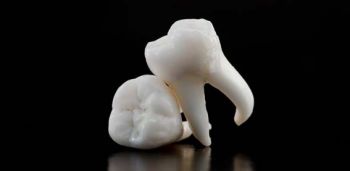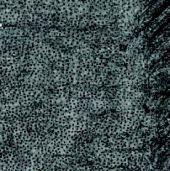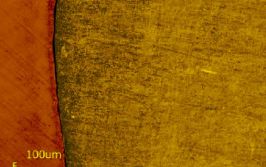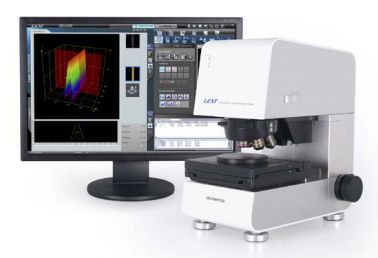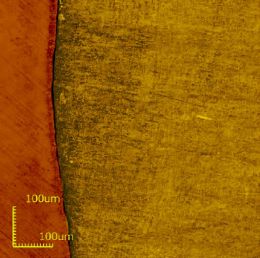Executive Summary
A process that can cause demineralization and damage on dental substrate, dental erosion is widely studied due to its high incidence within all age groups. Several techniques are used to analyze erosive lesions including roughness measurement, profilometry, and morphological analysis of the tooth surface. The purpose of this study was to evaluate new methods of dental erosion analysis. It was concluded that the erosive process can be analyzed using confocal laser microscopy.
Dental research is conducted on a large scale around the world involving in vitro, in situ, and in vivo studies. Erosive lesions present different etiologies however they are all established through the demineralization process and dental hard tissue loss, causing serious aesthetic and functional damage (Benages et al., 2006).
Several techniques are used to analyze erosive lesions and to quantify dental hard tissue loss. Roughness measurement and profilometry analysis have been typically utilized for morphological analysis of the tooth surface using images obtained by scanning electron microscopes (SEMs) (Attin, 2006); the aim of this case study was to evaluate new dental erosion analysis methods.
The ultimate purpose of the research covered here is to understand the dental erosion process from the beginning of demineralization to the formation of severe injuries, then seeking to develop preventive treatments methods. To perform dental erosion analysis instruments capable of precisely measuring possible changes in the tooth surface are required– thus, after considering the available tools for surface analyses and the quick and easy collection of precise data provided by a laser confocal microscope, the Olympus LEXT OLS4000 was ideal for the analysis of dental fragments that have suffered an erosive process.
The ultimate purpose of the research covered here is to understand the dental erosion process from the beginning of demineralization to the formation of severe injuries, then seeking to develop preventive treatments methods. Thus, after considering the available tools for surface analyses and the quick and easy collection of precise data provided by a laser confocal microscope, the Olympus LEXT OLS4000 was ideal for the analysis of dental fragments that have suffered an erosive process.
Roughness Measurement & Profilometry
Using a surface profilometer or contact surface roughness tester the loss of dental hard tissue can be determined by scanning specimens with a contact stylus (diamond or metal) with a diameter of 2–20μm (Hughes et al., 2002; Hooper et al., 2004). With this method, however, contact stylus size is unable to precisely detect the dissolution of the enamel due to the size of the stylus tip. Loss of enamel due to acidity yields a surface roughness of about 0.4 μm (Hooper et al., 2003). In addition to insufficient resolution, using a contact stylus can result in damage to the outermost demineralized layer of enamel due to the contact stylus coming into contact with the surface with a force load of a few milli-Newtons (Attin, 2006).
The use of a confocal laser microscope such as the Olympus LEXT OLS4000 leads to higher resolution as compared to a contact stylus as the microscope’s laser beam has a resolution of 0.4 μm. This is compatible with standard demineralization and does not cause damage on the sample surface because there are no contact forces between them (Figure 1).
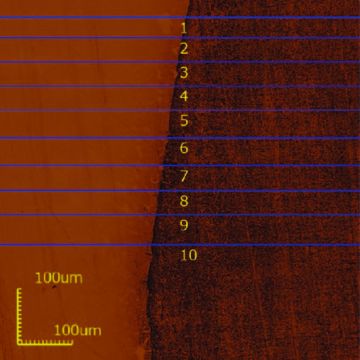
Figure 1: Profilometry analysis of eroded dental enamel by hydrochloric acid.
Left side: corresponding control area. Right side: corresponding eroded area.
The LEXT OLS4000 allows the operator to control the cutoff (filter used to define wavelength measured) used and still have a device that can compensate for differences in resolution in relation to a contact profilometer. This feature enables accurate comparison of these two types of equipment.
Surface Morphological Analysis
The surface changes caused by dental erosion can be observed through a Scanning Electronis Microscope (SEM). This technique however leads to sample loss since it requires sample preparation by dehydration in alcohol, covering with metal and carbon, and the need for a vacuum condition. The vacuum condition can cause cracks in the enamel and may interfere in surface analysis. Due to these facts samples subjected to SEM analysis were discarded due to the impossibility of continuing studies with an SEM.
The OLS4000 allows the creation of high-resolution 3D images and requires no pretreatment or vacuum conditions of the sample. Thus, these images may be used for other analyses or even the continuation of an experiment. Captured images allow the observation of surface changes such as enamel prisms, dentin tubules, and eroded areas (Figure 2, 3, and 4, respectively).
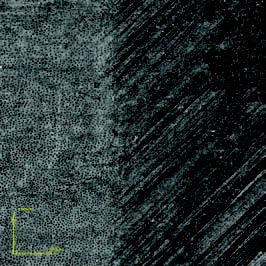
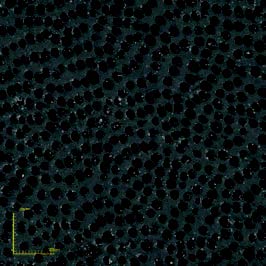
Figures 3a and 3b: Dentin exposed to hydrochloric acid. 3a left side: Eroded dentin; 3a right side: Control area.
3b: Dentinal tubule exposition.
Volumetric Analysis of Dental Erosion
Dental erosion is the substrate loss that occurs due to the demineralization process. Some methods, like the chemical analysis of minerals dissolved in an erosive agent, which determines dental enamel dissolution by assessing the amount of calcium or phosphate dissolved from the apatite crystals of dental hard tissue, can also be regarded as possible means of assessing dental erosion.
With the OLS4000, it is possible to quantify dental substrate loss through captured images. To perform this analysis, it is necessary that the surface to be analyzed is flat and that there is a reference area (control), which will be based on calculation of the volume lost of the area exposed to the erosive agent. Volume loss is calculated as the ratio volume in μm3/area μm2, being able to see quantitatively the lost volume to the tooth surface (Figure 5).
Conclusion
According to the data obtained in this study, the LEXT OLS4000 laser confocal microscope is able to perform roughness and profilometry analysis and capture 3D images of the highest quality, quickly and accurately. The OLS4000 also allows the analysis of dental substrate volumetric loss. Analyses are performed without sample preparation and with no sample loss. It was determined that the OLS4000 is an excellent device for use in the dental laboratory for clinical research. Through the OLS4000’s numerous analysis tools, it is possible to obtain a variety of data regarding the analyzed surface that will assist in research, data collection, and new analysis possibilities.
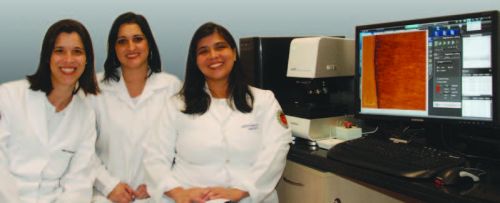
Juliana Jendiroba Faraoni-Romano, PhD
Juliana dos Reis Derceli, MSc
Regina Guenka Palma-Dibb, Prof, PhD
Acknowledgements
This study was supported by FAPESP (Fundação de Amparo à Pesquisa do Estado de São Paulo). Process 2010/19531-8 and 2011/12901-7. Thank you to Arotec S/A for allowing the use of the LEXT OLS4000 laser confocal microscope device.
References
- Benages A, Muñoz JV, Sanchiz V, Mora V, Mínguez M: Dental erosion as extraesophageal manifestation of gastro-esophageal reflux. Inter J Gastroenterol Hepatol 2006; 55:1050-1051.
- Hooper S, West NX, Pickles MJ, Joiner A, Newcombe RG, Addy M: Investigation of erosion and abrasion on enamel and dentine: a model in situ using toothpastes of different abrasivity. J Clin Periodontol 2003; 30:802–808.
- Hooper S, West NX, Sharif N, Smith S, North M, De’Ath J, Parker DM, Roedig-Penman A, Addy M: A comparison of enamel erosion by a new sports drink compared to two proprietary products: a controlled, crossover study in situ. J Dent 2004; 32:541–545.
- Hughes JA, Jandt KD, Baker N, Parker D, Newcombe RG, Eisenburger M, Addy M: Further modification to soft drinks to minimize erosion. A study in situ. Caries Res 2002; 36:70–74.
- ten Cate JAM, Imfeld T: Dental erosion, summary. Eur J Oral Sci 1996; 104:241-244.
